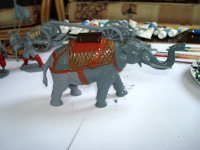Wraith
Major
- Joined
- Aug 26, 2006
- Messages
- 6,777
The door won't shut?
Why are elephants wrinkled ? (Sorry we are hijacking Jeff's thread, but he started it !!!)


Technicially, we're operating within the realms of the title. ish.
Have you ever tried to iron an elephant?
How do you get 4 elephants in to a Mini?


